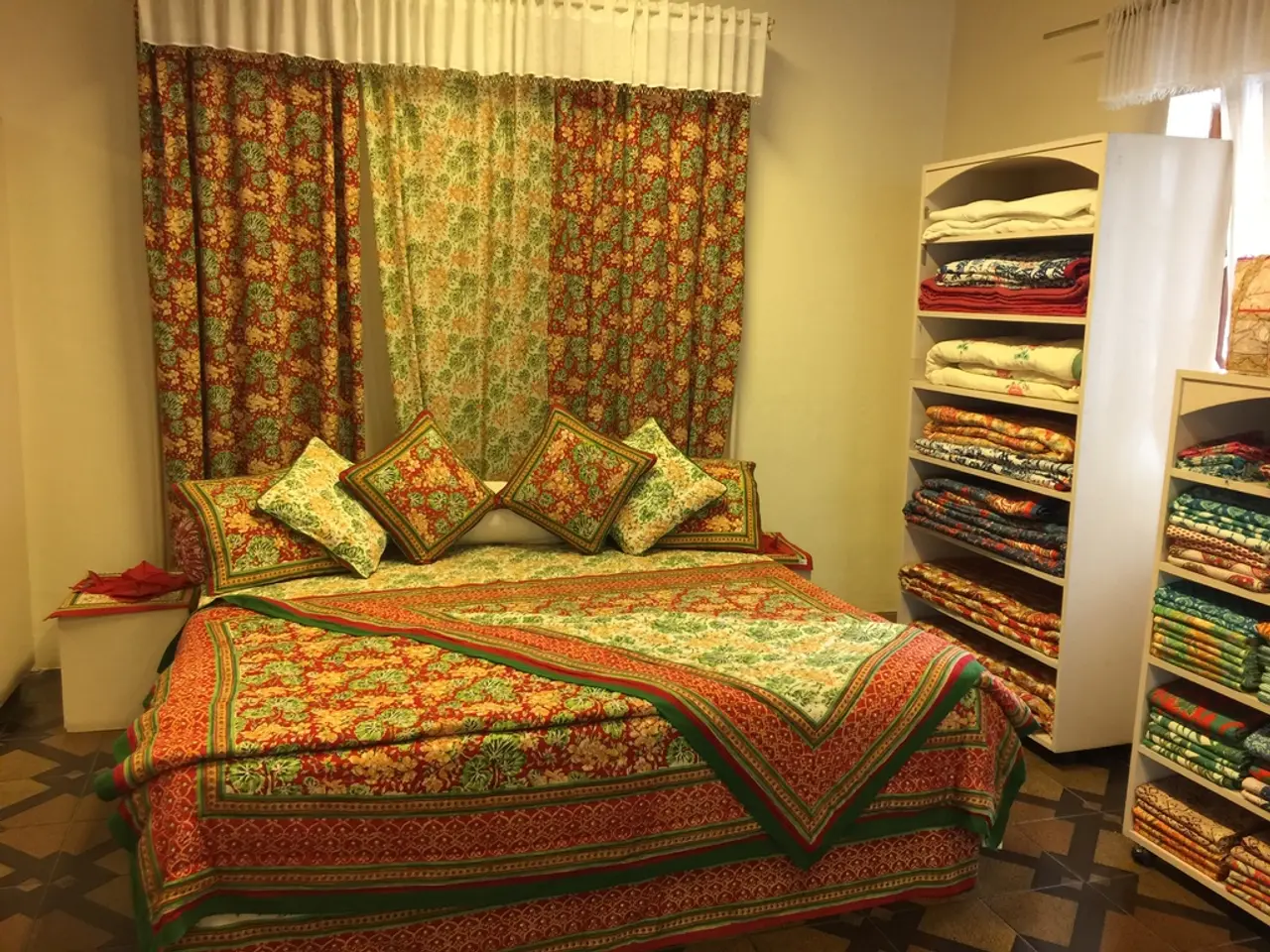Common pitfalls in designing children's bedrooms that contribute to clutter and disarray, along with suggestions for rectifying these issues.
A messy children's bedroom can be a common challenge for parents. However, transforming the space into a more organized and tidy environment is achievable with thoughtful planning and design strategies. Here are some key points to consider when addressing common design mistakes that make tidying difficult.
Insufficient Space or Poor Space Allocation
Not providing children with enough space to separate functional zones (e.g., sleep, study, play) can make organization more challenging, especially in shared rooms. Psychologists suggest at least 20 square meters for two children to comfortably accommodate beds, desks, storage, and play areas. To address this, allocate the largest bedroom to children and plan clear, separate zones for sleeping, studying, hobbies, and storage.
Lack of Defined Zones for Activities
Without designated areas for study, play, or rest, items can get mixed up, leading to clutter. Design the room with distinct zones—for example, a study area with desks and good lighting, a play zone, and a sleep zone—to maintain order and help children know where things belong.
Inadequate or Poorly Thought-Out Storage
Insufficient or disorganized storage leads to toys and belongings scattered around. Use personalized storage solutions like cubbies, rolling carts, baskets with labels, and adjustable shelving units to keep items visible and organized. Shared or individual storage furniture can help maintain personal zones.
Not Personalizing Storage and Study Areas
Without a sense of ownership, children may be less motivated to maintain tidiness. Personalize each child's area with colors, name signs, decorations, and mood boards to give a sense of identity and pride, encouraging them to keep their space tidy.
Overcrowding the Room with Too Many Toys or Materials
Having an excess of items increases clutter propensity. Regularly declutter and rotate toys by storing some away and swapping periodically to keep children engaged without overwhelming the space.
Ignoring Comfort and Atmosphere
If children don't find the space inviting, they may be less inclined to organize their belongings. Create a cozy environment with soft rugs, cushions, warm lighting (e.g., fairy lights), and textures to encourage children to spend time and care for the room.
Lack of a Tidy Routine
Without teaching and reinforcing clean-up habits, even well-designed rooms can become messy. Implement clean-up routines post-play and encourage children to put away toys to sustain tidiness.
In summary, to create a tidier children's room, allocate enough space, design clear functional zones, invest in accessible and personalized storage, regularly declutter and rotate toys, create a cozy atmosphere, and establish clean-up routines. These steps collectively make tidying easier and more sustainable for children and parents alike.
For a more efficient, though pricier option, consider a bespoke built-in bed. Movable pieces of furniture offer greater flexibility, such as the Storage Cart from Amazon. Everything that a child should put away should be within reach and not too heavy. Lift-up ottoman beds can pose a safety risk for primary-school-aged children. A foldable toy box can store smaller toys while also serving as decor.
Optimizing uninterrupted floor space can create the illusion of a larger space. Closed storage, like cabinets and toy boxes, helps maintain a tidy appearance. Wall shelves, like those from Amazon, provide hidden toy storage and remove the need for freestanding bookshelves. Bins and cube cubbies can lead to easy messes when items are thrown out or dumped.
Built-in beds help leave more floor space for play and create cosy nooks that children love. A box filled with a mix of crayons, felt-tips, pencils, and pens is more efficient than having separate labelled boxes or pen pots for each. Storage drawers with wheels and 50-liter capacity offer versatility and can be used under beds or other freestanding furniture. Minimizing the steps needed to put an item away will make it less likely to be left out.
Open shelving can quickly become cluttered and make a bedroom look messy. Built-in beds often have a pull-out trundle bed for sleepovers. Approach organization strategy from a child's perspective to ensure they find the space functional, comfortable, and inviting.
- To maintain a tidy children's bedroom, consider implementing home-and-garden solutions such as storage solutions like cubbies, baskets with labels, and adjustable shelving units to store toys and belongings effectively.
- Furnishing the bedroom with personalized interior design elements, like name signs and mood boards for each child, can foster a sense of ownership and encourage them to keep their areas tidy.
- To maximize efficiency and create a more organized environment, consider upgrading to lifestyle products like the Storage Cart from Amazon or wall shelves from the same source, offering hidden toy storage solutions and removing the need for freestanding bookshelves.




